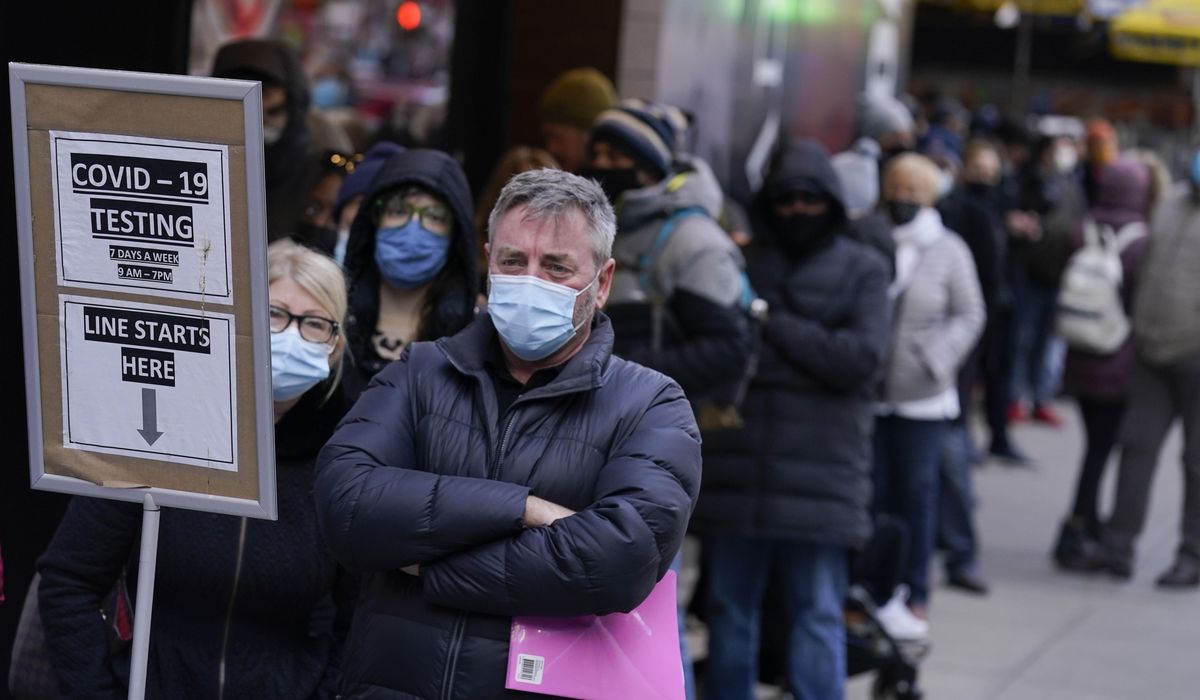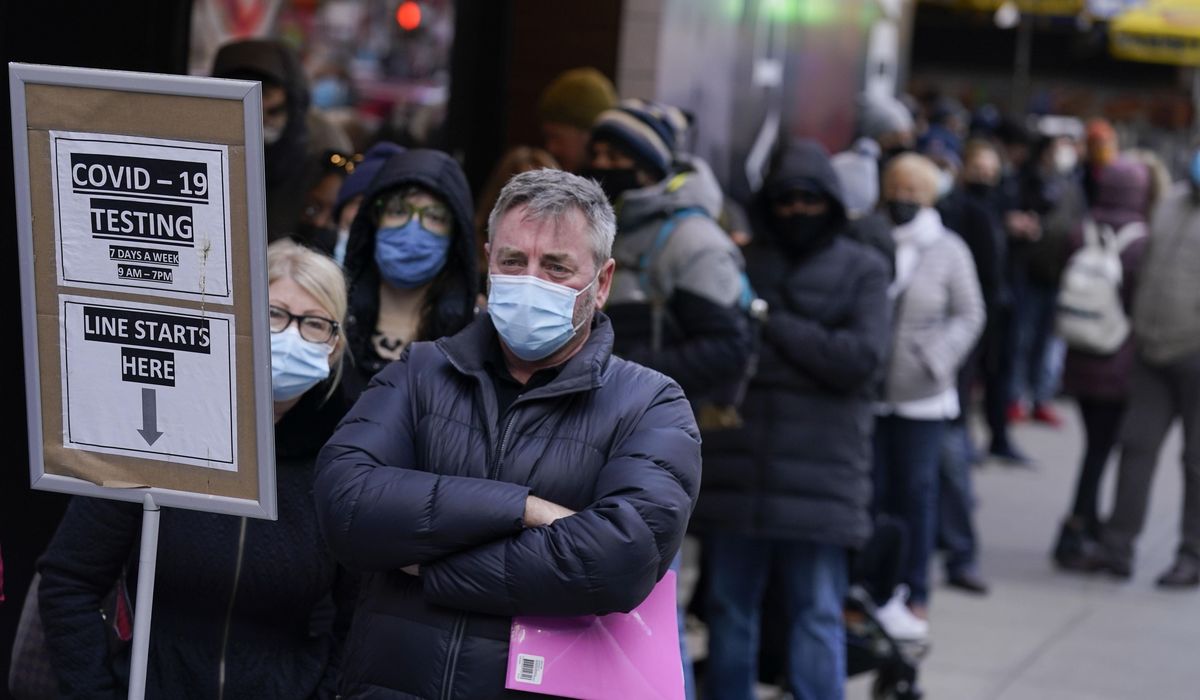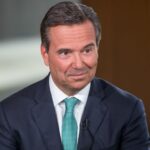
U.S. and global leaders see 2022 as a transition year in the COVID-19 fight as they look to pivot from the hair-on-fire “pandemic” phase to an endemic chapter in which the virus is always present but is managed like seasonal influenza.
Federal officials are desperately trying to tamp down the omicron crisis, which is leading to record hospitalizations. The crushing wave should peak at some point in January and February and then recede, forcing the country to grapple with how to get on with life as COVID-19 lurks.
“We’re not going to eradicate this. We’ve only done that with smallpox. We’re not going to eliminate [COVID-19],” Dr. Anthony Fauci, director of the National Institute of Allergy and Infectious Diseases, said at a recent briefing at the White House. “But we ultimately will control it.”
Rochelle Walensky, director of the Centers for Disease Control and Prevention, said the agency is thinking ahead to “when omicron or COVID itself were to become endemic in the United States” and how public officials should calibrate their responses to the severity of cases, availability of hospital capacity and other factors.
The comments signal a shift in how leaders think about COVID-19 — managing the disease instead of quashing it — and follow similar sentiments from European leaders.
“We may be on the eve of a watershed: the transition from a pandemic phase to an endemic phase,” Alain Berset, an interior minister in Switzerland, told reporters last week.
Spanish Prime Minister Pedro Sanchez said it is time to treat COVID-19 as an ever-present illness like the flu and not obsess over recording every infection. British Education Secretary Nadhim Zahawi told Sky News on Sunday that he wants the United Kingdom to be “one of the first major economies to demonstrate to the world how you transition from pandemic to endemic, and then deal with this — however long it remains with us, whether five, six, seven, 10 years.”
The first year of the COVID-19 pandemic was frantic, with states resorting to lockdowns and mandates to try to stem infection of the coronavirus while the world waited for effective vaccines. Those vaccines seemed to thwart the virus for a time last year, though the onset of fast-moving new variants set back efforts to blunt the pandemic.
This year, the U.S. will likely reach the maximum number of people willing to get vaccinated and stay up to date with booster shots. Antiviral pills to fight COVID-19 are coming onto the market, and preventive drugs are available to help protect immunocompromised people.
“I would think, in my guarded optimism, that sometime — maybe in February, actually — there will have been enough natural omicron infection, plus vaccination, we could begin to ease off the pandemic phase in the United States and move toward the endemic phase,” said William Schaffner, an infectious diseases specialist at Vanderbilt University.
States and cities are demanding proof of vaccination at some venues but have abandoned strict lockdowns.
“We have to reshape our thinking of, how do we live with COVID?” New York Mayor Eric Adams told CNN after his Jan. 1 swearing-in. “We spent $11 trillion on COVID. We don’t have another $11 trillion. Every variant can’t be another $11 trillion. It’s time to open up and feed our ecosystem, our financial ecosystems. That’s what I am telling my employees.”
Besides vaccination, Americans’ ability to cope with COVID-19 will depend on widespread and consistent use of tools to fight the disease and deal with seasonal spikes. The coronavirus tends to flourish in the winter but, unlike the flu, has spread widely in the summer, too.
Public health experts said individuals will have to make their own calculations based on personal risk. People might wear masks in public if they are particularly vulnerable to the flu or COVID-19, and some companies might enforce vaccine rules regardless of federal regulations.
Testing capacity should improve after significant increases around the holidays, allowing businesses and schools to screen people more effectively.
“We will shift from a pandemic to an endemic, learning to live with COVID-19, which is likely to remain throughout our lifetimes. That transition will mean that we stop counting cases or preventing spread. We will have less of an emphasis on all the things about COVID we have come to know, like masking, testing and distancing,” said Lawrence O. Gostin, a global health law professor at Georgetown University. “Instead, our goal will be to prevent people from getting serious disease and requiring hospitalization. We will have to directly link testing to early treatment and make key therapeutics available to the entire population, including monoclonal antibody treatment and antiviral pills. We will live with COVID but prevent it from gripping our lives the way it has the past two years.”
There is just one catch: The world needs to avoid another variant that can puncture defenses.
“If we get a new variant that can evade the current protection in our population, then ‘Katy bar the door’ because we would have to create a new vaccine and give everyone a dose of that vaccine and start over,” Dr. Schaffner said. “We might have a revolution because there’s so much pandemic fatigue.”
For now, the U.S. is trying to stem the worst from an omicron wave that is peaking in parts of the country but might cause problems in the Midwest.
“The good news is that there are parts of the country, New York in particular and other parts of the Northeast, where we are starting to see a plateau and, in some cases, an early decline in cases,” U.S. Surgeon General Vivek Murthy said on CNN. “The omicron wave started later in other parts of the country, so we shouldn’t expect a national peak in the next coming days. The next few weeks will be tough.”
Dr. Janet Woodcock, acting commissioner of the Food and Drug Administration, said the U.S. will have to focus on critical services during the surge.
“I think it’s hard to process what’s actually happening right now, which is: Most people are going to get COVID, all right?” she told the Senate Committee on Health, Education, Labor and Pensions. “What we need to do is make sure the hospitals can still function, transportation, other essential services are not disrupted while this happens. I think after that will be a good time to reassess how we’re approaching this pandemic.”
Some businesses are trying to reach a new normal by mandating vaccination. Citigroup sent a memo to employees saying those who are not vaccinated by Jan. 14 will be put on unpaid leave and fired at the end of the month unless they get an exemption.
JPMorgan Chase CEO Jamie Dimon signaled that his company is heading in the same direction.
“If you aren’t going to get vaxxed, you won’t be able to work in that office. We’re not going to pay you not to work in the office,” Mr. Dimon told Reuters. “We want people to get vaccinated.”
The banks are getting strict as companies grapple with how to reopen offices or whether they will be on a remote or quasi-remote footing for the long haul.
“What I’ve heard is a lot of [the companies] are saying, ‘Many of us are still going to vaccinate because even if you don’t die, we still want the workforce to be there,’” said Arthur Caplan, director of the division of medical ethics at the New York University Grossman School of Medicine. “I’m also hearing a lot of employees saying, ‘I like it just fine being home.’ This is going to turn into an employer-employee negotiation, not because of COVID but because of preference.”
A permanent shift to remote work could force significant changes in the economy even when the circulation of the virus eases. Holders of office real estate and airlines that rely on business travel will take hits, as will diners, cafes and shoeshiners who have built their operations around commuters.
“I don’t see that flourishing,” Mr. Caplan said.
Ed Egee, vice president of government relations and workforce development at the National Retail Federation, said one challenge for businesses will be dealing with conflicting rules as society tries to get back to normal but some parts of the country maintain stricter rules than others.
“Just in terms of legal compliance, some states and localities are saying you have to screen your employees and customers as well for vaccination status. Others are saying you can’t even ask because that’s a protected category. We are going to have an inconsistent approach to this virus going forward,” he said.
Even so, he said, the business outlook is looking better as states move on from lockdown policies and people get on with their lives.
“The mood is optimistic because the demand for their products is off the charts. Folks really missed restaurants during the pandemic, and they’ve come back and they have cash and they want to spend it,” Mr. Egee said. “We’re upbeat. At the same time, there’s going to be significant headwinds heading into 2022.”
For more information, visit The Washington Times COVID-19 resource page.







